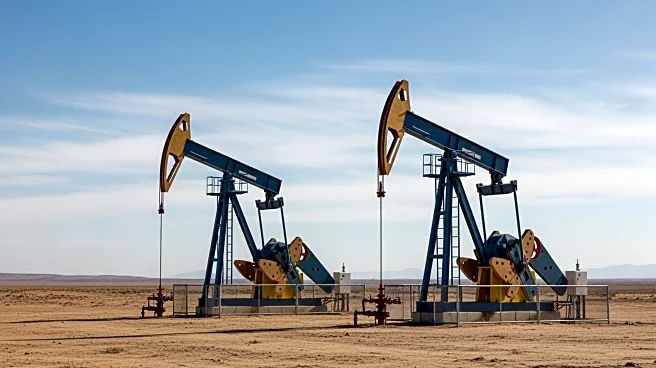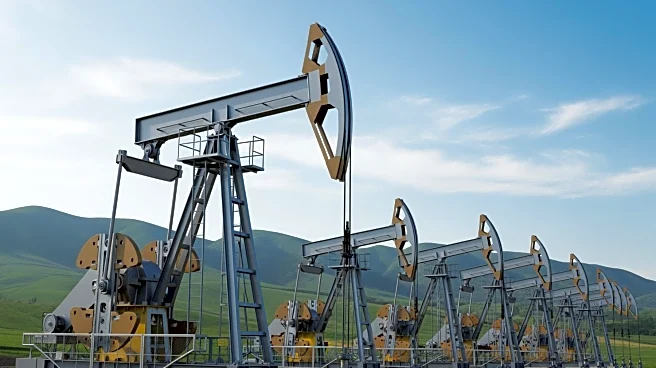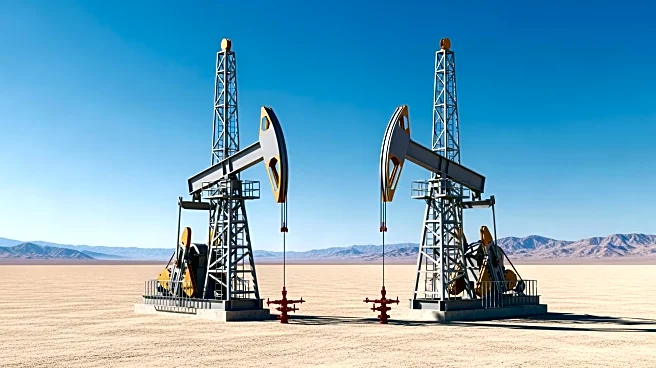What's Happening?
U.S. shale companies are maintaining their production levels despite oil prices hovering around $60 per barrel, which is close to the break-even point for many shale wells. Companies like Diamondback Energy
Inc., Coterra Energy Inc., and Ovintiv Inc. have announced plans to slightly increase their output for the current year and into 2026. Exxon Mobil Corp. has also raised its production guidance for 2025 by 100,000 barrels of oil equivalent per day, solidifying its position as the largest operator in the Permian Basin. This resilience is attributed to technological advancements in drilling and pumping methods, which have improved efficiency and reduced costs. The U.S. oil output reached a record 13.8 million barrels per day in August, driven by increased production from the Gulf of Mexico and technical gains in shale operations.
Why It's Important?
The ability of U.S. shale operators to sustain production growth despite lower oil prices is significant for the global oil market. It demonstrates the industry's adaptability and technological advancements, which have allowed companies to maintain profitability even when prices are near the break-even point. This continued production growth contributes to the global oil supply, potentially affecting international oil prices and market dynamics. The U.S. shale industry's resilience also underscores its role in the global energy landscape, influencing OPEC's production strategies and impacting energy security and economic stability.
What's Next?
The ongoing production growth in the U.S. shale industry may lead to further oversupply in the global oil market, potentially driving prices lower. Analysts suggest that prices may need to fall into the low $50-per-barrel range before U.S. producers consider scaling back production. The industry will continue to focus on technological innovations to improve efficiency and reduce costs, ensuring competitiveness in a fluctuating market. Stakeholders, including oil companies and investors, will closely monitor price trends and production levels to make strategic decisions.
Beyond the Headlines
The technological advancements in the U.S. shale industry highlight the importance of innovation in maintaining competitiveness in the energy sector. The focus on efficiency and cost reduction reflects broader trends in the industry, where companies are increasingly leveraging technology to address economic and environmental challenges. This shift may lead to long-term changes in how energy is produced and consumed, with implications for sustainability and climate change efforts.











